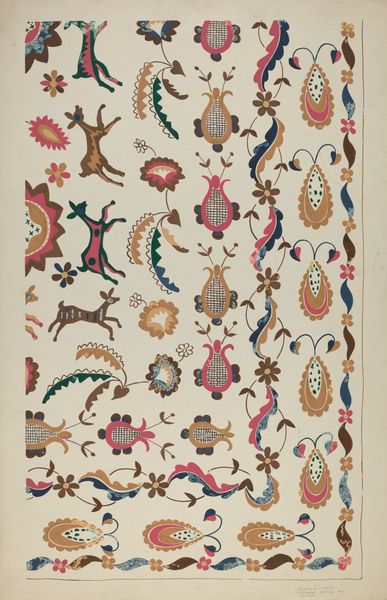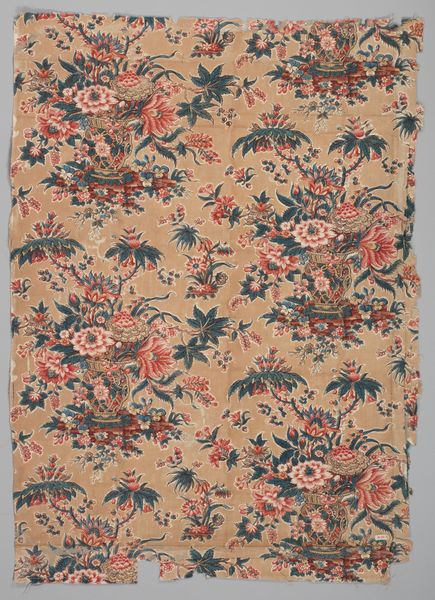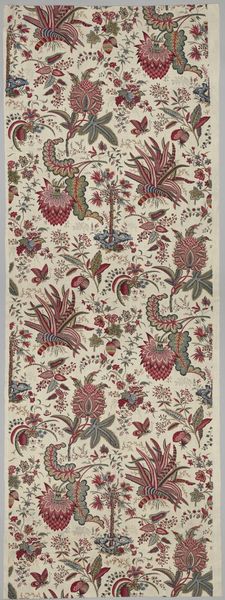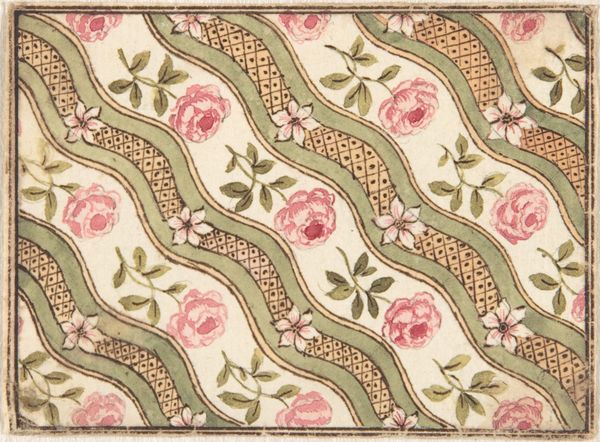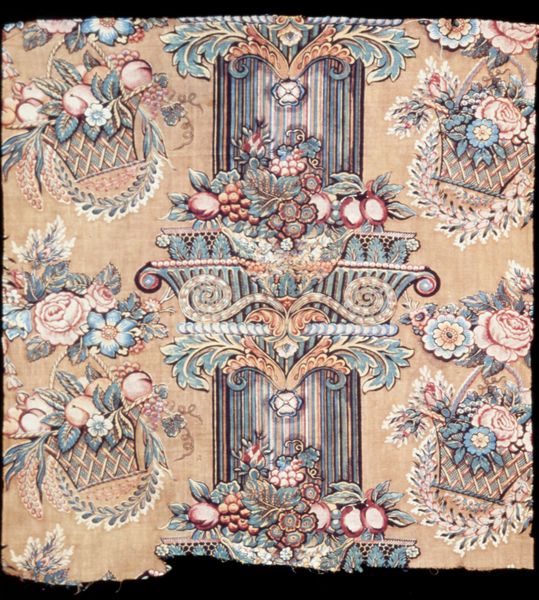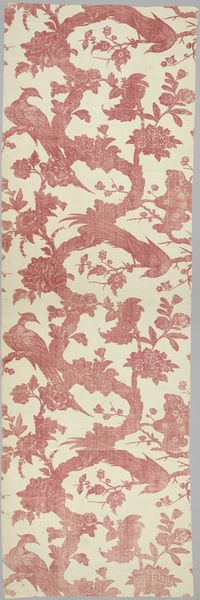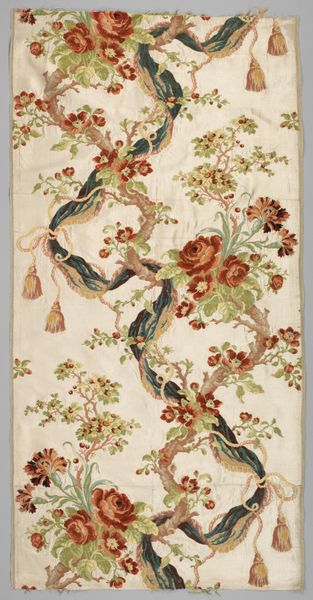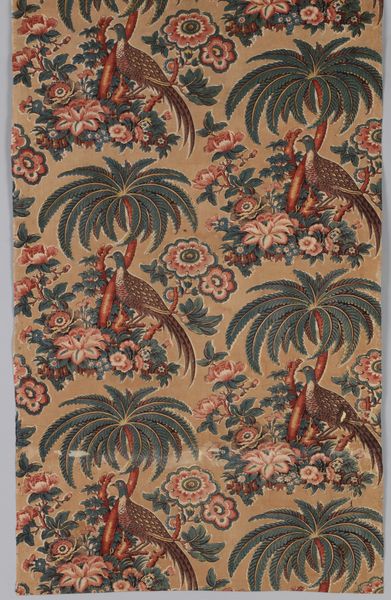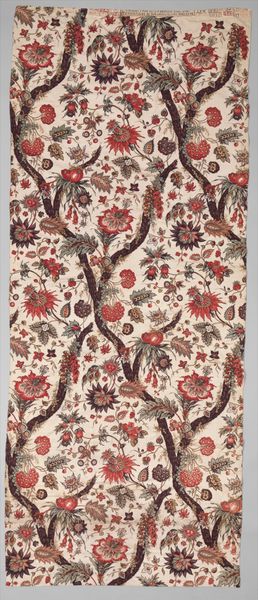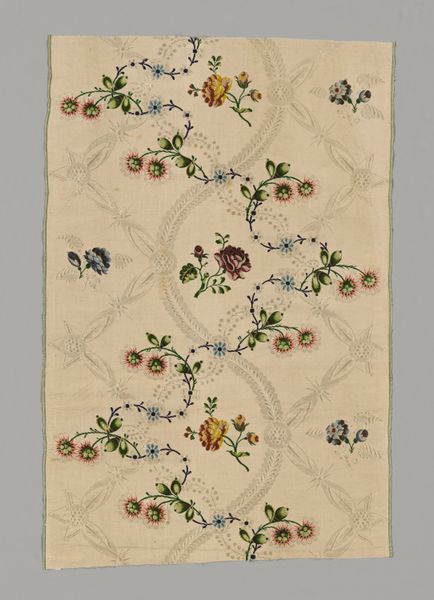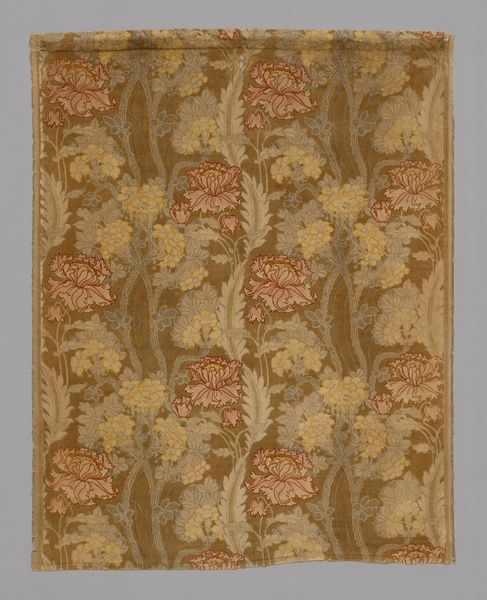
Dimensions: 40 x 22 1/2 in. (101.6 x 57.15 cm)
Copyright: Public Domain
Editor: Here we have a textile work, "Panel," made around 1703. It’s anonymous and done on silk, and feels very light and airy. What do you make of it? Curator: I'm drawn to the textile itself. Silk production in the Rococo era was a highly specialized industry, wasn't it? The material wasn't simply the support; it was the very essence of luxury and trade. Consider the looms used, the labor divisions within workshops… these were all integral to creating these kinds of delicate floral patterns, really meant to reflect leisure and privilege. Editor: That makes sense, thinking about it beyond just the pretty flowers. But what about the design? How does that fit in? Curator: The seemingly 'organic' forms are quite stylized. Are they truly reflections of nature, or symbols of cultivated tastes shaped by mercantilist desires? The textile's design, therefore, isn't separate from the social relations surrounding its creation and use. The value of raw materials like silk, the specialized labor, and ultimate display, would likely contribute to the consumer's social standing. Editor: I hadn’t thought about the link between production and status, really interesting! Curator: Exactly. The panel isn’t just a decoration; it's evidence of production. I wonder who labored on it, from the silkworms to the artisan who finished it? Who decided to consume it, and for what reasons? Editor: I guess looking at the artwork itself brings a focus to who was behind it, who made it with their hands, not just the artistic message. Thank you. Curator: Indeed. Thinking about all the aspects related to labor that created this object really shapes the entire artwork.
Comments
minneapolisinstituteofart about 2 years ago
⋮
In an effort to prevent French producers from taking over the luxury textile market, Italian weavers, who had dominated the trade in Europe for several centuries, created a bold new style which later historians dubbed Bizarre due to their strange and exotic patterns. During the 1690s, several European weaving centers quickly began producing these popular new patterns, but by 1700 French designers and weavers reached a degree of sophistication which has enabled them to dominate the luxury cloth trade for more than two hundred years.
Join the conversation
Join millions of artists and users on Artera today and experience the ultimate creative platform.

